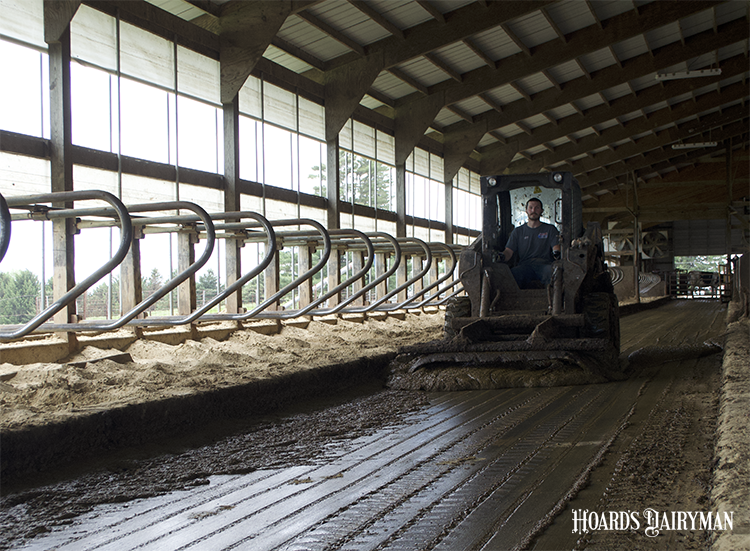
With a photo of an old-fashioned tractor and manure spreader as a backdrop on the screen, Rebecca Larson, an associate professor and extension specialist with the University of Wisconsin-Madison, started out the October Hoard’s Dairyman webinar by saying, “Some things with manure haven’t really changed.” She explained that our end goal for manure is to get those valuable nutrients land applied to help grow the crops that will feed our livestock.
Yet, changes in regulations, volume, and equipment certainly have impacted how manure is managed today, and Larson continued, “But there are a lot of opportunities to integrate new technology or processing on your farm.”
Manure systems start with production and collection and end with storage, transfer, and application. Between those steps, farms can integrate processing or treatment of manure. Larson explained that processing changes the characteristics of manure, while treatment aims to reach a specific goal for the manure.
From solid separation to anaerobic digesters to water treatment systems, farmers find themselves with more manure processing and treatment options than ever before. Deciding which one will work best is no easy task. During the webinar, Larson recommended that farms set goals for their manure system before settling on any one technology.
When identifying goals, she said, “Be specific.” Rather than falling in love with a technology and figuring out how it can work on your farm, Larson advised coming at it from a different angle. She said to look at what problem you want to solve or what improvement you want to make. And again, make those goals specific. For example, rather than setting a goal to reduce hauling costs, determine by how much you want to cut those costs. Or, rather than simply acknowledging you have too much phosphorus for your land base, figure out how much extra phosphorus needs to be removed from the manure each year.
Cost is a major factor in selecting a system, but there are other noneconomical factors that must be considered, such as too many nutrients for the current land base, a need to reduce labor, or something with the current collection system that isn’t working.
In order to set goals and then select the best system, Larson said it is critical for a farmer to know their system and have numbers to evaluate it.
“Data is really important,” she said. “You can’t do the analysis unless you know the components of your system.” Examples of data to collect include manure produced annually, hauling costs, and characteristics of the manure (such as solids or liquid content). Also consider how far manure is being hauled, how much fertilizer is being purchased, and how a new manure system would fit into your big picture nutrient management plans.
Of course, new manure technology must either fit into the existing system or the existing system will need to be changed to incorporate those components. Larson said to evaluate this area carefully to determine what is needed so that there are not surprise costs down the road.
To learn about some of the manure processing technologies available today, watch the October Hoard’s Dairyman webinar, “Will manure processing technology work on my farm?” This webinar was sponsored by McLanahan.








